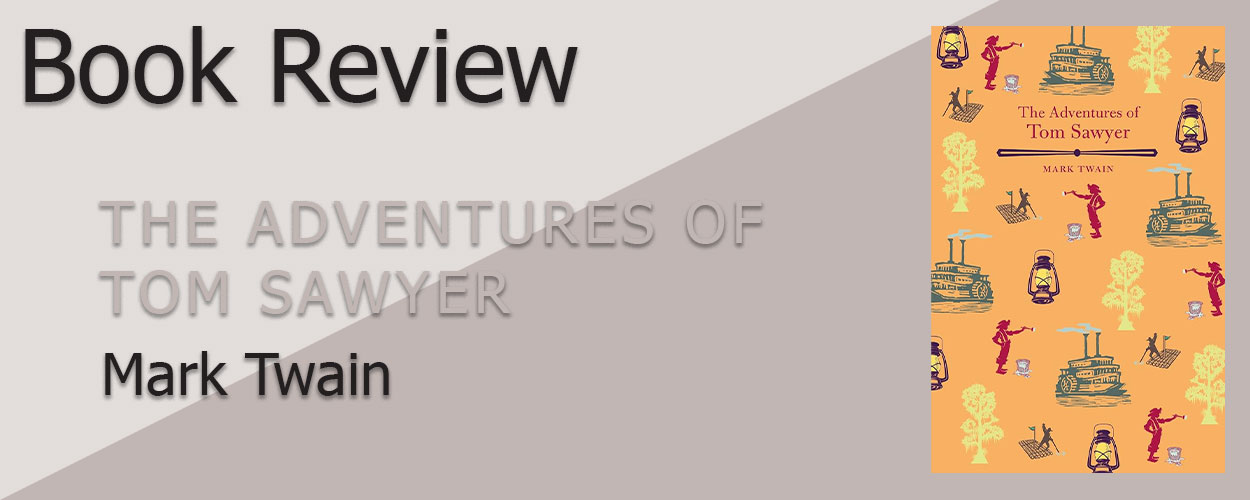

I liked it
I tried reading this book back in high school, but it was too difficult to follow. Figured I might as well give it another try now.
Read: Oct. 28 – Nov. 1, 2024
Genre: Classic
Audience: Children
Book contains: mentions of slavery, use of “n” word, murder, death, lost underground
Purchase a copy from Amazon.ca
Tom Sawyer, a mischievous boy living with his half-brother Sid and his Aunt Polly, lives in Missouri. Follow along on his adventures in and around town as he tries to have fun without getting into too much trouble.
I’ve had two prior experiences with this story. The first was an animated movie from which I only remember a single scene, and the other being when I picked up the book once in high school and tried reading it. I didn’t get far in either case, but I bought it on a trip to Coles one day and chose to try it once more, if only to say I’ve read it.
Mark Twain is the narrator for this book, though he’s not an active one. He tells the story of Tom Sawyer with a few embellishments, and though it mostly focuses on Tom, there are points in which Twain follows other characters as well. The adventures all tend to flow from one to the next, without any clear titles to each, and there’s a clear progression despite the lack of a singular plotline.
For this book, I once again turned to Spotify. I chose the Great Audiobooks podcast, which contains the LibriVox recordings of this novel. The reader had a soothing voice, and he had a southern drawl, which was perfect to listen to this book in.
Tom Sawyer is a rascal if there ever was one. He spurns society, despite being comfortable in it, and he’s incredibly clever, tricking not only other kids his age, but the adults around him too. Like other young boys, he’s fascinated with adventure, and he pretends to be a robber or a pirate or a treasure hunter to fill his days. The other important character, Huckleberry Finn, is a boy whose been spurned by society, and he becomes fast friends with Tom, going along with the other boy’s schemes. The other characters orbit around Tom and his antics.
Tom’s main parental figure is his aunt, who appears to love him though she hits him—as the period and religion dictate. She’s also quite the pushover, and Tom easily guilts her multiple times throughout the story. Tom’s friendship with Huckleberry Finn started because of how rebellious it was to hang out with Huck, though it grew to something showing true loyalty between the boys. The third main relationship is the one Tom has with Betty, whom he first takes for granted and then goes on a lifechanging journey with.
The writing style was incredibly different from what I’m used to. It’s full of Southern American slang and colloquialisms. It had a very bouncy flow and was fun to read, but was sometimes hard to follow because of that.
As the title suggests, this book doesn’t really stick to a single plot, but rather follows Tom on his many “adventures” whether he’s tricking the neighbourhood boys to do his chores or exploring deep dark caves or looking for lost treasure. This is not a book for readers of fast-paced action, though it does pick up around the middle.
I recommend this book to fans of American literature, readers of tales about young boys just being boys, and those who are curious about that historical period.
The Adventures of Tom Sawyer by Mark Twain
The Adventures of Huckleberry Finn by Mark Twain
Great Expectatons by Charles Dickens
A Portrait of the Artist as a Young Man by James Joyce
Moby Dick by Herman Melville
Tigerpetal Press is a small book press dedicated to publishing local authors and poets.